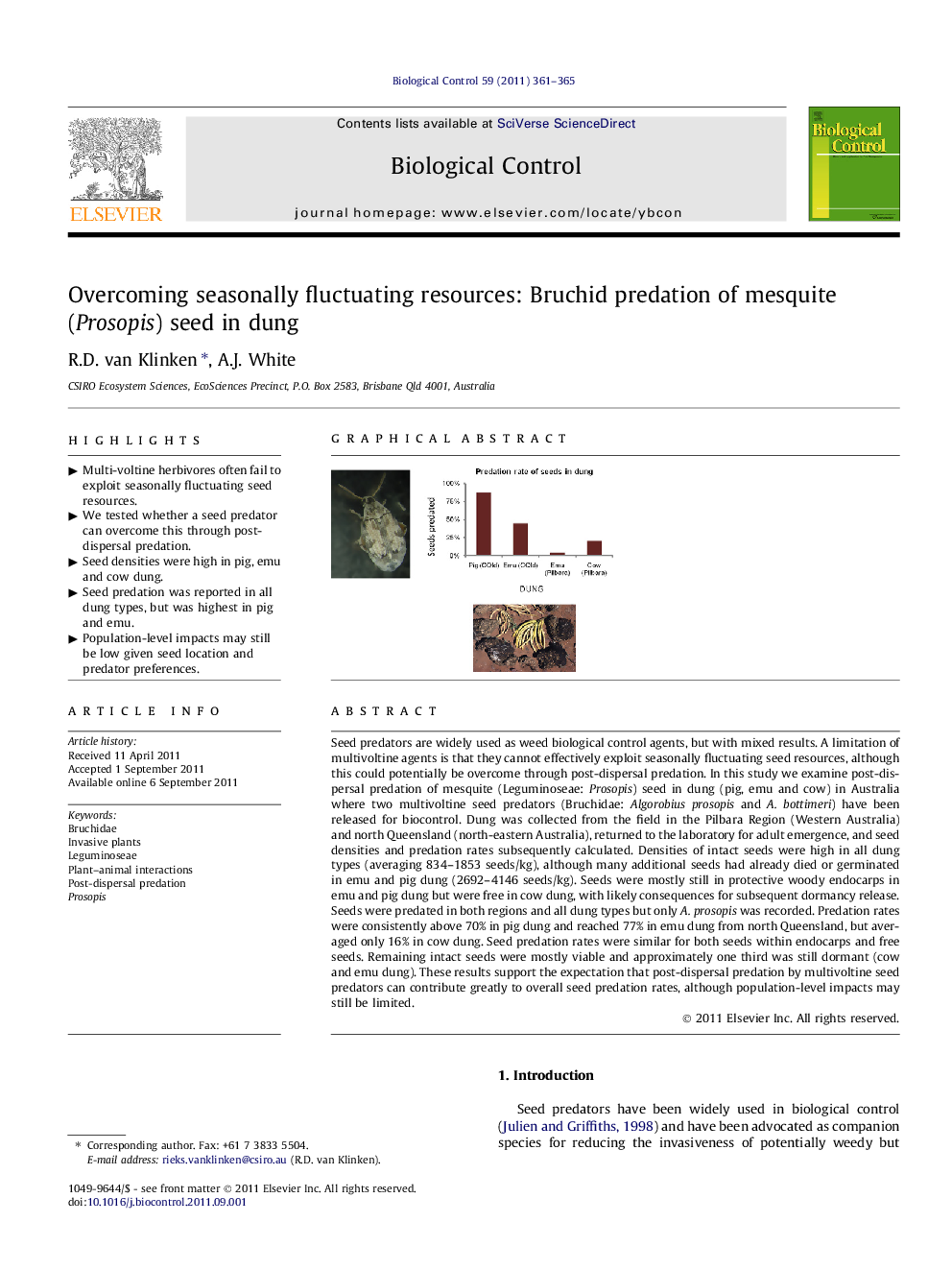| کد مقاله | کد نشریه | سال انتشار | مقاله انگلیسی | نسخه تمام متن |
|---|---|---|---|---|
| 4504155 | 1321073 | 2011 | 5 صفحه PDF | دانلود رایگان |

Seed predators are widely used as weed biological control agents, but with mixed results. A limitation of multivoltine agents is that they cannot effectively exploit seasonally fluctuating seed resources, although this could potentially be overcome through post-dispersal predation. In this study we examine post-dispersal predation of mesquite (Leguminoseae: Prosopis) seed in dung (pig, emu and cow) in Australia where two multivoltine seed predators (Bruchidae: Algorobius prosopis and A. bottimeri) have been released for biocontrol. Dung was collected from the field in the Pilbara Region (Western Australia) and north Queensland (north-eastern Australia), returned to the laboratory for adult emergence, and seed densities and predation rates subsequently calculated. Densities of intact seeds were high in all dung types (averaging 834–1853 seeds/kg), although many additional seeds had already died or germinated in emu and pig dung (2692–4146 seeds/kg). Seeds were mostly still in protective woody endocarps in emu and pig dung but were free in cow dung, with likely consequences for subsequent dormancy release. Seeds were predated in both regions and all dung types but only A. prosopis was recorded. Predation rates were consistently above 70% in pig dung and reached 77% in emu dung from north Queensland, but averaged only 16% in cow dung. Seed predation rates were similar for both seeds within endocarps and free seeds. Remaining intact seeds were mostly viable and approximately one third was still dormant (cow and emu dung). These results support the expectation that post-dispersal predation by multivoltine seed predators can contribute greatly to overall seed predation rates, although population-level impacts may still be limited.
Figure optionsDownload as PowerPoint slideHighlights
► Multi-voltine herbivores often fail to exploit seasonally fluctuating seed resources.
► We tested whether a seed predator can overcome this through post-dispersal predation.
► Seed densities were high in pig, emu and cow dung.
► Seed predation was reported in all dung types, but was highest in pig and emu.
► Population-level impacts may still be low given seed location and predator preferences.
Journal: Biological Control - Volume 59, Issue 3, December 2011, Pages 361–365